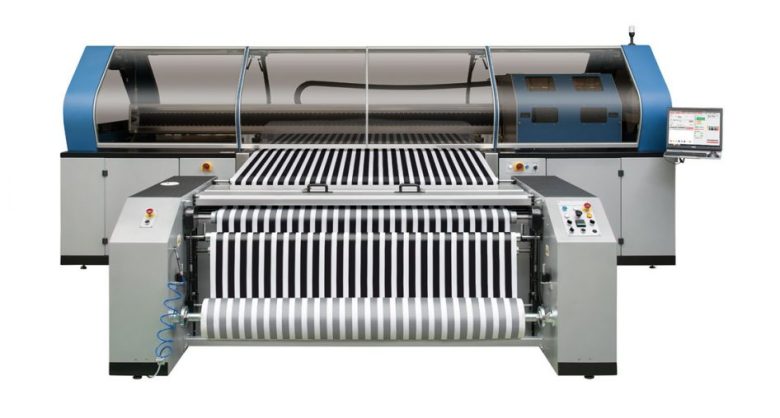
Mimaki is launching a new digital textile printer, the Tiger-1800B, in Australia, with the company saying it is a high production printer capable of direct to textile or transfer dye sublimation output.
Mimaki is the latest wide format technology developer to launch a digital textile printing solution, as the market opens up for short run on demand work.
The company says the Tiger-1800B can deliver large-scale production at manufacturing sites and small-scale production at on-demand sites, making it the ideal printer for digital textile applications.
Mimaki says the Tiger-1800B brings operational efficiencies and reliability to large companies that are currently using analog screen-printing processes – or multiple, smaller digital units – to produce high volume textile runs for internal vertical markets sold via business-to-business or business-to-consumer avenues. The company claims the printer enables businesses to overcome quality, cost and time to market issues by offering more efficient operations, higher resolution printing, consistent quality for repeat orders, and reduced operating costs.
[Related: Visual Impact highlights new tech]
The company says the 74.8-inch Tiger-1800B digital textile printer includes an adhesive belt transport system with belt washing technology and in-line heat drying unit for an all-in-one process for direct-to-textile printing.
Mimaki says the Tiger-1800B is a production model featuring 16 print heads in a staggered array for the direct-to-textile model (or 8 print heads for the transfer dye sublimation model), resulting in print speeds of up to 4144 square feet per hour. The company says usable quality can be achieved even at these high print speeds to meet volume demands, or to quickly produce shorter-run projects such as for regional or seasonal fashion requirements.
Brad Creighton, national sales and marketing manager of Mimaki Australia says, “We have got availability of the product, but it is being focussed more on the European, Asian and other markets. How we are approaching it is a bit more targeted, it will not have as widespread marketing and be at the demonstration level here.
“It is a production oriented machine, we do not see multiple uses from a local perspective. For direct textile printing, we have two other machines that are more suited in the mid-tier market, and that are more suited to production capacities here.”
Mimaki says digital textile printing has grown by an average of 30 per cent over the past five years, and says it is set grow even over the next couple of years.
Comment below to have your say on this story.
If you have a news story or tip-off, get in touch at editorial@sprinter.com.au.
Sign up to the Sprinter newsletter
